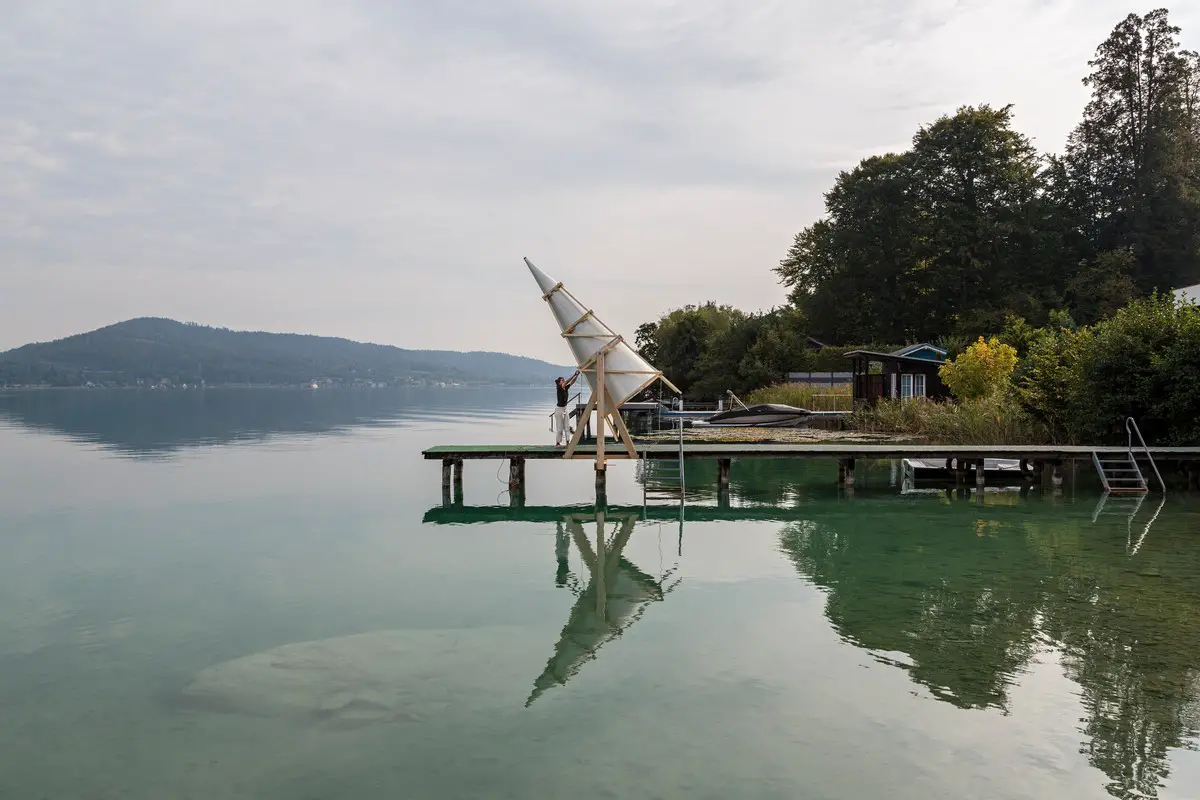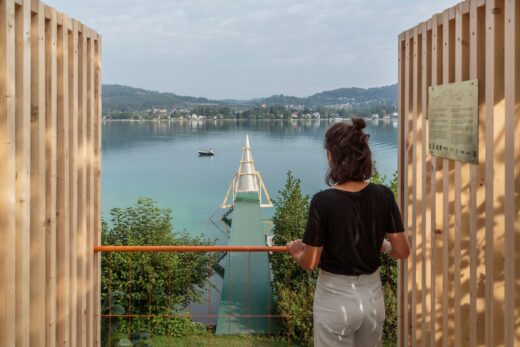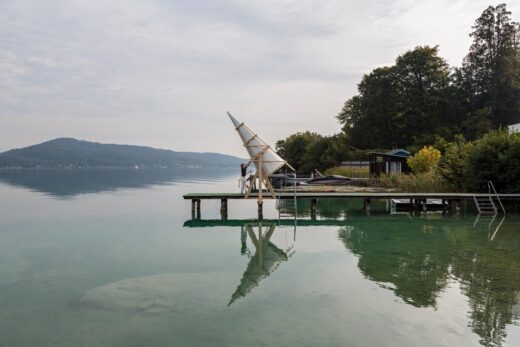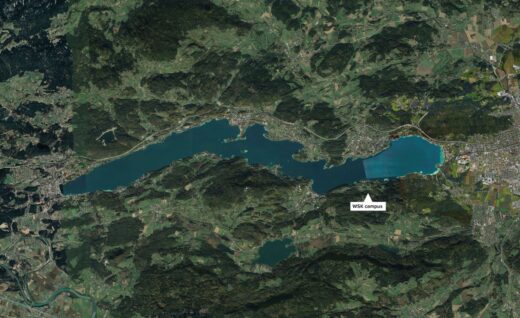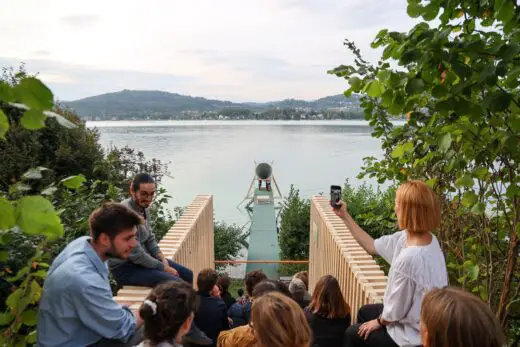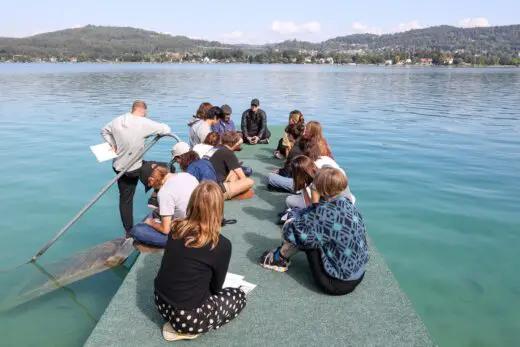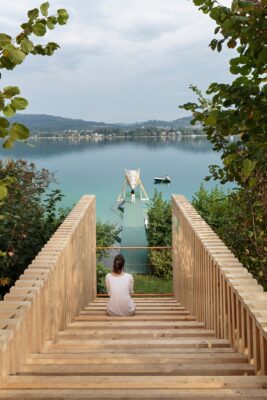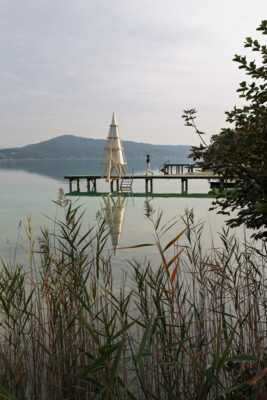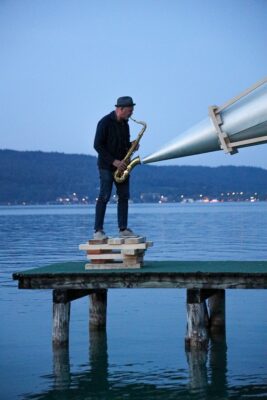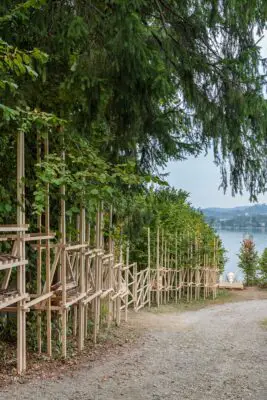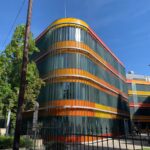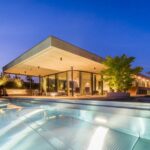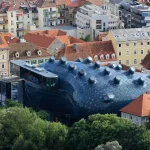AA nanotourism Visiting School Wörthersee, Carinthia Architecture Photos, Austrian Building
AA nanotourism Visiting School at Wörthersee
10 March 2022
All-Year-Round Cultural Campus for London’s Architectural Association School of Architecture, UK
Location: Sekirn on Wörthersee, southern Austrian state of Carinthia, Austria
Photos by Paul Sebesta / AA nanotourism archive
AA nanotourism Visiting School, Wörthersee, Austria
Vienna Boys’ Choir Summer Residence, Wörthersee, Austria
AA nanotourism Visiting School 2021
Over two weeks, students design and build a series of three architectural interventions to address and critique the hyper-privatised nature of Austria’s Lake Wörthersee.
Wörthersee has 83% of its shoreline inaccessible to the public. At the same time, located on the lake’s south shore, the Vienna Boys’ Choir Summer Residence is an underused property and one of the last remaining places with an opportunity to open up for the people.
The project critically addresses the lake’s wild privatisation and the current unawareness of the cultural presence of the Vienna Boys’ Choir in the local community.
The three interconnected interventions: ‘Exchange Fence’, ‘Stare!’ and ‘Sound Cannon’, offer tools for a new cultural exchange between the Boys’ Choir community and the local general public, capable of addressing the future transformation of the Vienna Boys Choir Campus into an all-year-round cultural venue.
Context
Wörthersee is one of Austria’s most prominent lakes. Historically, it has served as a transport infrastructure for traditional woodworking trades, while it has developed into a place of high interest for holidaymakers in the last century. Today, once family-run small romantic hotels are giving way to audacious developments of generic apartment blocks and villas for wealthy individuals who want the piece of the lake’s shore for themselves only. Consequently, a staggering amount of 83% of the lake’s perimeter is publicly inaccessible!
But there is a hidden gem – one of the last remaining plots with potential public access to the lake. Along the lake’s fenced-off south perimeter road, Vienna Boys’ Choir Summer Residence Campus is a place of underused potential. The boys practice their singing skills and spend time on the estate for two summer months per year only, while the rest of the year, the 6 acres of the Campus, remain empty and unoccupied – maintained for no one.
Although the Vienna Boys’ Choir is a world-famous high culture of choir singing, the neighbouring Wörthersee community have little knowledge of their presence. Their identity and highly specific skills are hidden behind the thick greenery of the Campus.
Former Vienna Boys’ Choir singer and current management board member architect Volker Dienst identified the unique opportunity of the property and the necessity for the Campus’ transformation. He opened up the discussion for possible changes in their rusted routine by inviting the AA nanotourism Visiting School to research, experiment and propose prototypes for a meaningful and gradual transformation of the campus’ nature.
In preparation for the course, the Programme Head of the AA nanotourism Visiting School, architect Aljosa Dekleva, has invited a British colleague Thomas Randall-Page to co-mentor the Wörthersee edition of the school. Teamed up with programme assistants Amanda Sperger, Jakob Travnik and tutor Andreas Arndt they taught and worked together with fifteen young architects and architecture students from various international backgrounds on how an underused Vienna Boys Choir Campus can turn into an all-year-round cultural venue.
In an intense two-week summer school, they investigated the Campus’s existing natural and cultural specificities. They developed one-to-one scale conceptual on-site intervention in the form of three built installations with events and strategies that proposed possible Campus’ future developments for the visitors and members of Vienna Boys’ Choir alike. This intervention is the first step towards the larger aim to find a responsible development strategy of the Campus that would continue to host the principal private activities of the Vienna Boys Choir members during summers, while it would also expand its role to a regional, multi-disciplinary cultural campus of the 21st century, open to the public and operational throughout all seasons.
The team has created an architectural intervention from concept to construction consisting of three individual but correlated structures. The ‘Exchange Fence’ critically addresses the traditional type of the dividing fence and explores its transformations into a socially cohesive multifunctional element of the local community. The ‘Stare!’ critiques the over-privatisation of the lake’s shores and offers a working example of privately owned public space. And the ‘Sound Cannon’ challenges the lack of cultural presence of the Vienna Boys’ Choir in the local community by offering the opportunity for the Boys’ Choir to perform for the public and invite local musicians for collaboration.
Exchange Fence
Good Fences Make Good Neighbours
Part fence, part store, ‘Exchange Fence’ mediates the public boundary by stimulating material exchanges.
How can the critical approach to maintenance strategies and fencing of the Vienna Boys’ Choir Campus re-value its natural resources to stimulate the exchange with the neighbouring community?
The six-acre property of the Vienna Boys’ Choir is full of natural resources that are carefully being maintained and manicured throughout the four seasons of the year regardless of the short period of two months when the boys are actually at the Campus. The upkeeping of the estate is regularly producing a set of natural “waste” materials, from hay, grass, shrubs and bark to branches and logs, that used to contain specific values in the local farming economy.
In an approach to sustainably resolve land management issues, the intervention looks at the Campus’ residue material as a resource for stimulating neighbouring relationships through storage and trade of those materials.
Replacing the existing monofunctional and dividing fence and recognising its typology’s contextual, social and economic potential, the project proposes a different type: a ‘deep fence’. This three-dimensional structure still functions as a barrier to the site, which additionally operates as a storage system, storefront and marketplace of natural waste materials produced at the Campus throughout the year. The publicly accessible structure aims to stimulate new rituals of exchange and debate on seasonal maintenance routines, waste and the notion of privatisation of land in the region.
Wiener Sängerknaben:
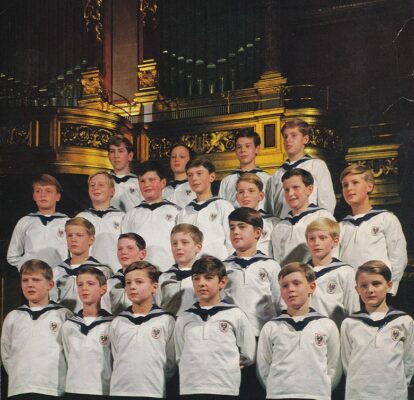
photo © Arno Argos Raunig WSK
Stare!
Public Pier of a Former Shoreline
The micro auditorium, ‘Stare!’ is a public space with a private view, inviting the audience to a new lake vista.
How can a privately owned piece of property become a publicly accessible and educational interface between the lake, the Vienna Boys’ Choir and the visitors?
Vienna Boys’ Choir Campus is located halfway of the longest – 1.3 km long – stripe of the lake’s perimeter road that offers not a single glance to the lake. Reacting to the excess of fenced-off shoreside properties that privatise the lake view, the intervention provides several alternatives. Firstly, it proposes a publicly accessible viewing platform that enables passing visitors to enjoy the lake’s views from a secluded stairway by bringing the viewer closer to the water and away from the noisy road.
Secondly, as an altered exemplar of the pier typology, the project testifies about the former shoreline of Lake Wörth, which was lost in 1770 after the artificial lowering of the lake’s water level. Therefore, the intervention is devoted to leisure, but it also educates visitors on almost forgotten past.
Finally, it doubles as the auditorium that can host an audience of 20 people taking part in the performance happening on the existing campus’ pier. The pier and the wooden stair-like structure are axially aligned to work together as one, spatially correlating setting. Opening up the possibility of hosting a performance encourages the Vienna Boys’ Choir members to stage small public events to reinforce their singing identity and relation to the Wörthersee’s community.
Sound Cannon
Amplifying the Local’s Culture Voice
Standing knee–deep in the lake and singing, ‘Sound Cannon’ is an analogue amplifier of the unique vocal culture of Wörthersee.
How can singing and music be spread throughout lake Wörthersee to facilitate new forms of cultural exchange between the Vienna Boys’ Choir and the general public?
The lake is a shared space of the Wörthersee area inhabitants. With its acoustic and spatial qualities, it already functions as a natural sound transmitter, offering multiple experiences of sound travelling across the lake throughout different times of the day. On the other hand, Vienna Boys’ Choir is internationally well known for their singing, but the lake’s community is mostly unaware of their presence.
With the ambition of giving the voice to the Choir, the project imagines the lake as a sound facilitator that distributes the high cultural identity of the Vienna Boys’ Choir to the local community on the lake. Fixed on the existing wooden pier of the Campus, the Sound Cannon becomes an amplifier of the local music culture, providing an interaction point between the Vienna Boys’ Choir, local musicians and the public.
The horn is a kinetic, flipping device. It can either face the lake and distribute the sound to ‘accidental’ listeners of the lake’s community or face the land to perform to an audience on the Vienna Boys’ Choir publicly accessible plot. Used in new performative rituals, the Sound Cannon contributes to the soundscape of Wörthersee and allows for musical experimentation that is a long tradition of the lake’s history.
Quotes:
“The key teaching agenda of AA nanotourism is to promote a creative process that expands beyond design. The process of researching, designing, and making is just as important as the final outcome.”
“We aim to create responsible concepts and prototypes in scale one-to-one that are based on the local context on the cultural, social and material level.”
“To change the perspective on how we visit places and to better understand the ones we live in, we proposed back in 2014 the constructed term, nanotourism, which stands for a creative critique of the current environmental and social downsides of conventional tourism.”
“Nanotourism is a site-specific, participatory, locally oriented and bottom-up alternative to conventional tourism that stretches beyond tourism itself: it is an attitude dedicated to the improvement of specific everyday environments and a strategy for creating new models of local economies.”
“Ultimately, AA nanotourism is an architectural school of critical thinking that strives to transform the everyday routine into a set of new and meaningful experiences of mutual participation. AA nanotourism is a programme that challenges the self-evident and looks beyond standard solutions.”
– Aljosa Dekleva, Programme Head and Mentor
“With the globalisation of the building material market, and a global internet-based fashion in architecture, who guards this extraordinary diversity from the standardisation of architecture?”
“It is foolish to think we are able to go back to a pre-global era, but at the same time we should ask, how can we find contemporary yet authentic building cultures, which are once again born of their place?”
“We now poses much more sophisticated technology than they had in the 14th century, but it has led us to be lazy and wasteful, forgetting basic passive principles in favour of active systems that remove us from our climatic surroundings.”
“To rediscover an authentic architecture of place we must not produce a pastiche of what has gone before by simple borrowing motifs, forms and symbols of the vernacular past. Nor must we romanticise the past and regress. Instead, we must engage with the fundamental forces that formed the vernacular of that place.”
– Thomas Randall-Page, Invited Mentor
AA nanotourism Visiting School Wörthersee – Design Information
Credits
project title:
All Year Round Cultural Campus
location:
Vienna Boys’ Choir Summer Residence, Sekirn on Wörthersee, Austria
school programme:
AA nanotourism Visiting School, 2021
Architectural Association, School of Architecture, London, UK
time:
31.8 – 15.9.2021
project mentors:
Aljosa Dekleva, Programme Head
Thomas Randall-Page, Invited Mentor
Amanda Sperger, Programme Assistant
Jakob Travnik, Programme Assistant
Andreas Maximilian Arndt, invited Tutor
project participants:
Exchange Fence – Good Fences Make Good Neighbours:
Elias Bouyssy – France
Oliver Canins – Italy
Amanzholl Kellett – UK
Iva Grlić Radman – Croatia
Mihail Sugarev – Bulgaria
Stare! – Public Pier of a Former Shoreline:
Anna Bernbacher – Austria
Pia Fattor – Argentian
Kim Gubbini – Luxembourg
Kya Kerner – USA
Jeremias Pointner – Austria
Sound Cannon – Amplifying the Local’s Culture Voice:
Eleonora Balestra – Switzerland
Clara Copiglia – Switzerland
Kanto Ohara Maeda – Japan
Anne Steffen – Luxembourg
Mykhailo Zhuk – Ukraine
school’s programme visiting experts & critics:
Theo Deutinger – TD
Volker Dienst – Vienna Boys’ Choir, architektur in progress
Philipp Furtenbach – AO&
Tina Gregorič – dekleva gregoric architects, TUW
Astrid Meyer Hainisch – Hotel Ogriss am See
Elias Molitschnig – Green Party, Carinthia
Jakob Ottacher – Rubner Holzbau
Christopher Pierce – Architectural Association, London
Roland Sint – Wörthersee Tourism
Peter Zöch – Snøhetta, Innsbruck
Photographs:
Paul Sebesta
AA nanotourism archive
partners:
Vienna Boys’ Choir – Austria
architektur in progress – Austria
TU Vienna – Austria
sponsors:
Rubner Holzbau* – Austria
Wörthersee Tourismus – Austria
Baukulturjahr Kärnten 2021 – Austria
Velux – Austria
*Special thanks to Rubner Holzbau, who, in addition to financial support, have also generously sponsored wood and supported us with their team of experts for the construction of the projects.
About the AA nanotourism Visiting School
The AA Nanotourism Visiting School is an experimental architectural academic programme based at London’s Architectural Association School of Architecture. Since 2014 it has been developing projects worldwide with students and professionals who wish to further their knowledge, practice, and skills in architecture. Reflecting on how we interact with the places we visit and live in, the programme engages with specific local environments to critically address their relevant spatial, programmatic and social issues.
Aljosa Dekleva, Programme Head
Amanda Sperger, Programme Assistant
Jakob Travnik, Programme Assistant
contact:
email: [email protected]
website: nanotourism.aaschool.ac.uk
facebook: AA nanotourism Visiting School
instagram: aananotourism
AA nanotourism Visiting School, Wörthersee, Carinthia images / information received 100322 from London’s Architectural Association School of Architecture
Location: Sekirn on Wörthersee, Carinthia, southern Austria, central Europe
London Architectural Association School of Architecture
AA Visiting School Khartoum, Sudan, Africa
AA Visiting School Khartoum, Sudan
AA Visiting School nanotourism, Vitanje, Slovenia
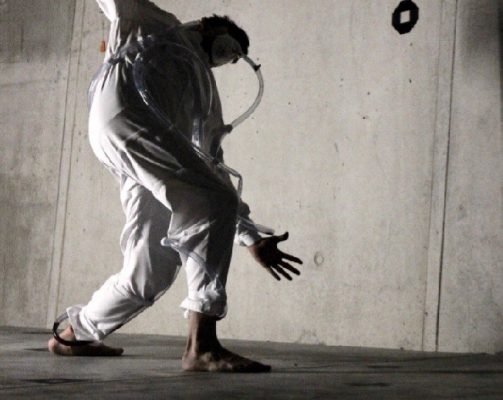
AA Visiting School nanotourism
AA Milan Summer School, Italy
AA Milan Summer School
New Austrian Architecture
Contemporary Austrian Architecture
Austrian Architectural Designs – chronological list
Hotel Park’s Velden am Wörthersee, Velden am Wörther See, Villach-Land District, Carinthia
Design: SHARE architects
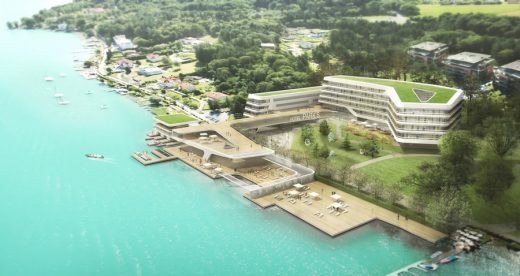
image courtesy of architects practice
Hotel Park’s Velden am Wörthersee
RINGANA campus, Sankt Johann in der Haide, Hartberg-Fürstenfeld, Styria
Integrated design: ATP architects engineers, Vienna, and ATP sustain
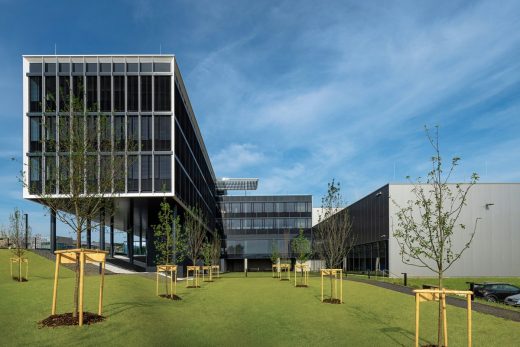
photo : AnnABlaU
RINGANA Campus St. Johann in der Haide
Handl Gastro Service Building, Pians, Landeck, Tyrol
Design: ATP architects engineers, Innsbruck
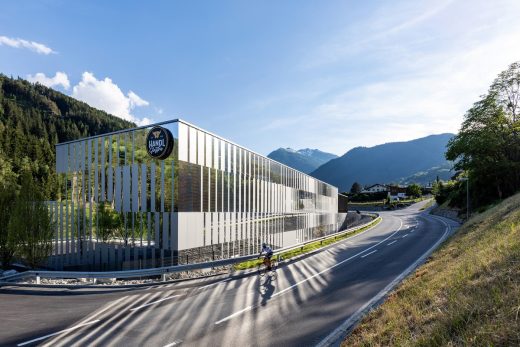
photo © ATP/Bause
Handl Gastro Service Tyrol Building
Loft Panzerhalle, Salzburg
Design: smartvoll Architekten ZT KG
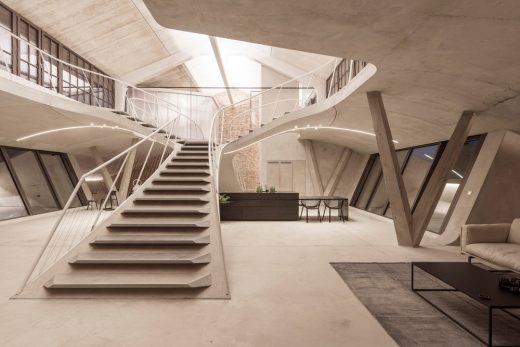
photograph : Tobias Colz/smartvoll
Loft Panzerhalle in Salzburg
C&P Corporate Headquarters, Graz
Architects: INNOCAD Architecture
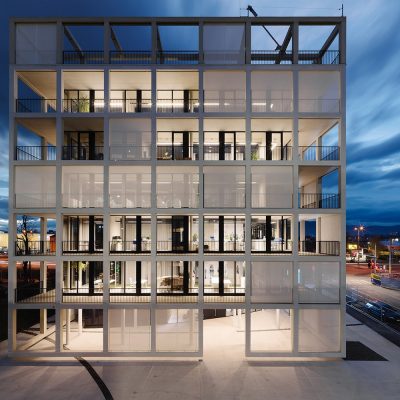
photo : Paul Ott
C&P Corporate Headquarters, Graz
Comments / photos for the AA nanotourism Visiting School, Wörthersee, Carinthia page welcome

